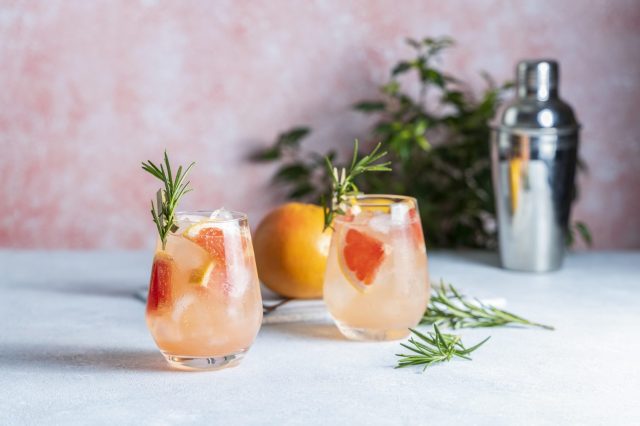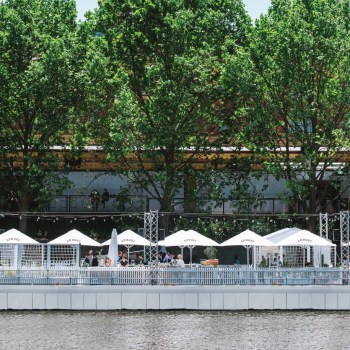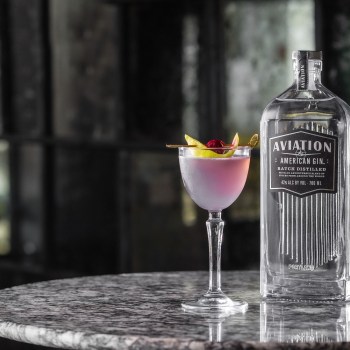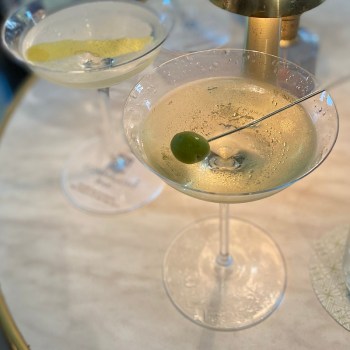By Annabelle Cloros
The drinking public has well and truly adapted tequila as a staple, finally coming to appreciate the nuances of the spirit made from Mexico’s native blue agave plant. It’s been a long journey for some (myself included), whose early tequila experiences involved a red-capped bottle consumed a little too quickly. But perceptions change — and thank goodness for that.
Beyond a shot, the margarita is the most common application tequila is used in, with a version of the cocktail found at most venues; regardless of culinary direction. You could say drinkers are currently in the comfort phase when it comes to how they drink tequila, but now is the time to venture beyond the margarita and look to its fun, zingy sibling: the Paloma.
Hospitality speaks to El Primo Sanchez Bar Manager Eduardo Conde about the Paloma’s status in Mexico, blanco vs reposado tequila and why the drink is one to watch this summer.
The Paloma likely originated in Mexico in the 1950s and poetically translates to ‘dove’ in Spanish. The cocktail is oft made with blanco tequila combined with pink grapefruit soda (and/or pink grapefruit juice), lime juice and agave syrup in a highball glass rimmed with salt and finished with a slither of citrus.
It’s a no-fuss, high-impact drink, which means it’s a regular at the bar and in the home. “You mainly see the Paloma at parties and weddings in Mexico,” says El Primo Sanchez Bar Manager Eduardo Conde.
“It’s been underrated in Mexico for a long time, but it’s become more popular over the past couple of years. People enjoy highballs and seltzer-style drinks, so it has more of a presence in bars.”

You’ll find it on the menu (and potentially on tap) at El Primo Sanchez in Paddington, Sydney. Public Hospitality and the Maybe Sammy team are behind the new addition to the hospitality scene, which has seen the ground floor of The Rose Hotel transformed into a Mexican-inspired bar that opens shortly.
“You can still expect the same high level of hospitality, playful energy, brilliant cocktails and attention to detail as our other bars,” says The Maybe Group Co-Founder Vince Lombardo.
“It will just be wrapped up into a Mexican environment with more of a laidback pub vibe than a high-end cocktail bar.”
The grapefruit component of the Paloma is what makes it, well, a Paloma. The addition is usually in the form of Squirt or Jarritos Toronja (grapefruit) soda, and while bartenders have long taken a crafted approach to each element that goes into a drink, there’s something to be said for honouring tradition.
Squirt has been a quintessential mixer since its inception and the sweet, carbonated grapefruit drink has been consumed in Mexico for decades. Fresca and Jarritos Toronja are also reached for by home drinkers and bartenders to make a Paloma. The sugar content of the soda naturally dials up the sweetness of the drink, which may come as a surprise to some.

“When I arrived in Australia, I realised the flavours here are quite different … the palate is a little bit more delicate,” says Eduardo.
“Some people like drinks sweet and others like them tart. In Mexico, we drink it sweeter, but with the climate here, people like things that are fresher and dryer.”
Despite the presence of soda, the Paloma is far from being an overtly sugary–sweet drink — it’s based around grapefruit, after all. Bartenders can opt for pink or yellow grapefruit and make the most of seasonality by adding fresh juice to the cocktail in addition to (or in place of) soda.
“The grapefruit gives the drink tartness and it’s quite refreshing, so people can have more than one,” says Eduardo.
“I would also like to see people experiment and make their own sodas. There’s a lot to play around with, so I would consider infusing mango leaves or lemon myrtle to make a mango soda with a citrus component.”
Tequila is the base of a Paloma, but it isn’t the easiest or cheapest spirit to get your hands on these days thanks to its global boom in popularity. “It’s hard to bring in tequila and there’s a shortage in Mexico as well,” says Eduardo.
“But we’re going to have a selection at El Primo Sanchez to cater to everyone; we want to make sure people appreciate it and can try different options.”
There are several different categories of tequila, with blanco, reposado and anejo the most commonly used by bartenders. Palomas usually call for blanco, which is known to be the ‘purest’ form of tequila. Blanco is colourless and is bottled directly as it does not go through an ageing process, resulting in a citrus-driven flavour profile. “It’s traditionally made with blanco tequila because it has notes of citrus,” says Eduardo.
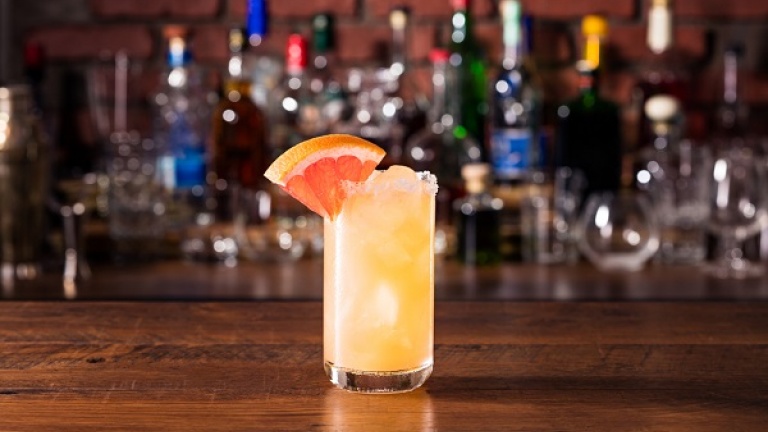
The bartender favours Don Julio blanco, tipping Patron Silver, Fortaleza, Tio Pesca and Don Armando as other “solid options for a Paloma”. Reposado can also be used, but allowances need to be made when it comes to the recipe.
Reposado tequila is matured in oak casks for a minimum of 60 days, with the agave flavour mellowing out and leading to a golden liquid with notes of sweet spice and fruit. “Reposado has more vanilla and there’s complexity,” says Eduardo.
“Pink grapefruit goes with blanco, so you have to change the soda to lemon myrtle for example with reposado and use a different fruit.”
The composition of a Paloma is a timesaver for bartenders — there’s no elbow grease required. But if bartenders are planning on serving the cocktail with a salt rim, it’s a good idea to do that first.
While standard salt does the job, Eduardo uses the salt rim as an opportunity to introduce another layer to the drink. “I like using Olsson’s red gum smoked sea salt, which works really well with the cocktail,” he says. “Otherwise, you can do pink salt, chilli salt or just do half the rim with smoked salt and leave the other half free. The flavour of the drink changes with the salt.”
Eduardo builds a Paloma in a highball glass and starts by measuring out the tequila, which is not something you’d usually see happen in Mexico. “I do 45–50ml of tequila and then 100ml of homemade soda or StrangeLove’s salted pink grapefruit soda,” he says.
“Then I add 10–15ml of lime juice because I like it more on the citrusy side and add in 5ml of agave, ice, a pinch of salt and finish it with a wedge of grapefruit or another citrus garnish.” And that’s it.
The future of the Paloma looks bright, and there’s no doubt the cocktail fits right into the current diaspora of drinks made from high-quality spirits teamed with components that complement a liquor, rather than mask it. “People are trying to drink better, and a Paloma allows you to appreciate how good a tequila is,” says Eduardo.
“You can definitely taste the spirit more in a Paloma compared to a margarita, which has more sugar. The Paloma has a less-intense flavour profile, so the tequila can come through.”
With the warm weather in full swing and margarita fatigue setting in, there’s a prime
opportunity for venues to contribute to the evolution of tequila of home soil. There’s a wide world of tequila-centric cocktails to put on the menu, and the Paloma is a good place to start.
This story was first published in Hospitality Magazine, subscribe to the newsletter here.
